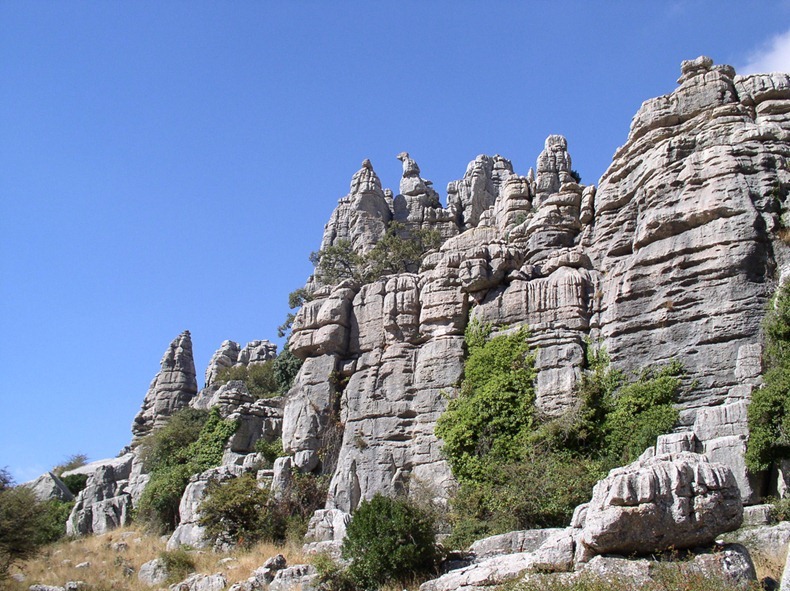El Torcal de Antequera is a nature reserve in the Sierra del Torcal mountain range located south of the city of Antequera, in Spain. It is known for its unusual limestone formations and magnificent geology formed over millions of years. El Torcal de Antequera Nature Reserve has one of the most impressive landscapes in Europe. It’s not very far from human habitation either. The reserve can be reached via the village of Villanueva de la Concepción, just 10 kilometres from the town of Antequera, and 20 kilometres north of Málaga.
Millions of years ago the entire area of El Torcal was submerged under the ocean being part of a marine corridor that stretched from the Gulf of Cádiz to Alicante. During the Tertiary era, violent movements of the earth’s crust lifted these seabeds out of the water to an elevation of over 1300 meters, resulting in a modest mountain range of flat-lying limestone, which is rare in Andalucia. For the next 100 million years, these rocks were subjected to severe erosion by wind and rain leaving some of the most peculiarly shaped rock formations in the world today. Many of these shapes resemble, and have been named after, everyday objects such as the Sphinx, the Jug, the Camel, the Screw, etc. Other flat surfaces have been karstified into rugged, rocky lands where travel on foot is difficult.

Like many massive limestones, the Torcal includes caves and other underground forms, some of them of historical importance like the Cueva del Toro (Cave of the Bull) with its Neolithic artifacts. Their origins are also related to the dissolution of underground limestone by rainwater.
The region is bare for the most part of the year, except in spring when an explosion of coloured flowers and moss grows on the rock faces – with species such as lilies, Nazarenes, red peonies, wild rose trees and orchids blossoming – making EL Torcal a picture-postcard oasis of calm and tranquillity. Other than the rocks, El Torcal’s 17-square-foot landscape is marked with a thick green carpet of pine trees, craggy canyons and trickling streams.
The area was designated a Natural Site of National Interest in July 1929, and a Natural Park Reserve of about 17 square kilometers was created in October 1978.
















0 komentar:
Post a Comment